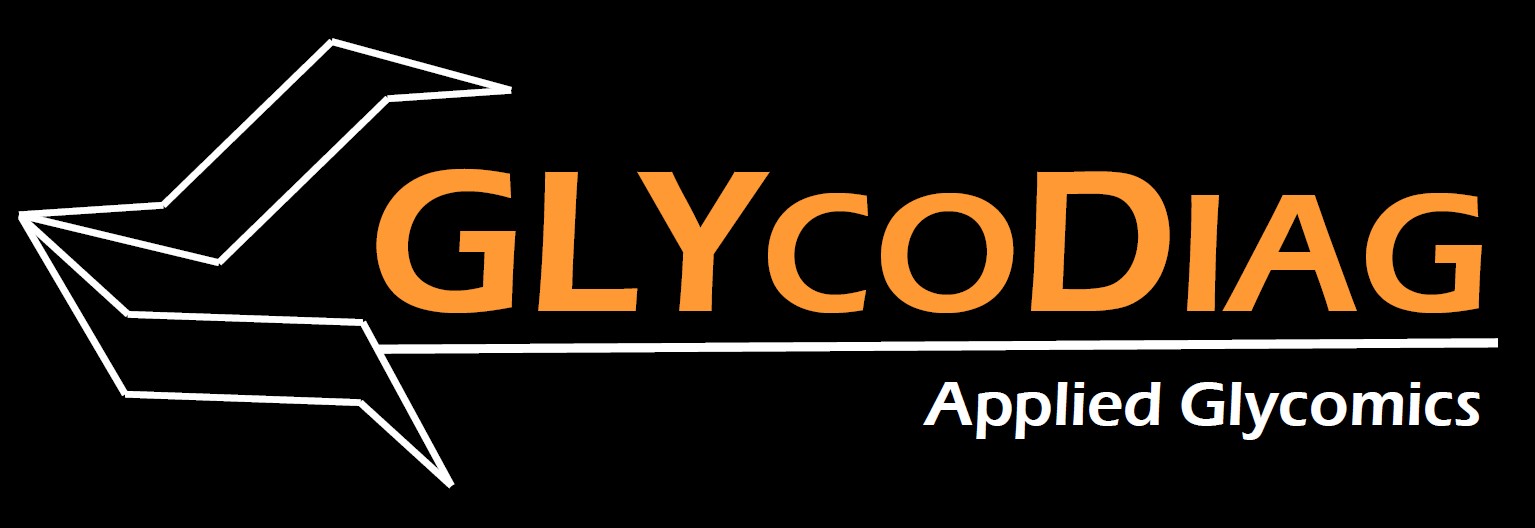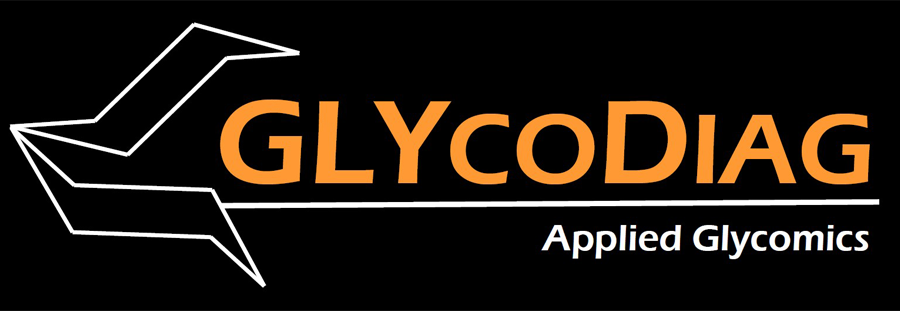GLYcoPROFILE used in bacterial studies of Tropheryma whipplei infection
Divoly, A., Zarza, S. M., Landemarre, L., Roubinet, B., Decloquement, P., Raoult, D., Fournier, P.-E., Desnues, B. Human galectin-1 and galectin-3 promote Tropheryma Whipplei infection, Gut microbes, 2021, 13, e1884515 (DOI : 10.1080/19490976.2021.1884515).
GLYcoPROFILE was recently used for the characterization of Tropheryma whipplei, an actinobacterium which causes various infections in humans, including Whipple’s disease. Thus, the GLYcoPROFILE has enabled to characterize the glycan signature of T. Whipplei glycoproteins.
GLYcoDiag’s Newsletter February 2021
GLYcoDiag’s Newsletter January 2021
Download the GLYcoDiag’s Newsletter January 2021 about α2.3/α2.6 Neoglycoproteins.
GLYcoPROFILE used to evaluate sialidases ligands efficiency
Polyvalent transition‐state analogues of sialyl substrates strongly inhibit bacterial sialidases.
C. Assailly, C. Bridot, A. Saumonneau, P. Lottin, B. Roubinet, E-M. Krammer, F. François, F. Vena, L. Landemarre, D. Alvarez Dorta, D. Deniaud, C. Grandjean, C. Tellier, S. Pascual, V. Montembault, L. Fontaine, F. Daligault, J. Bouckaert, S. G. Gouin., A., Chem. Eur. J., 2020, (DOI : 10.1002/chem.202004672).
GLYcoPROFILE technology was recently used in bacterial sialidases studies to screen a large range of inhibitors. Trough this method, polyvalent compounds based on the transition state sialyl cation 2-deoxy-2,3-didehydro-N-acetylneuraminic (DANA) have shown high affinity for sialidase from S.pneumoniae (NanA) from micromolar to picomolar range.
GLYcoPROFILE technology is an useful tool for characterisation of new ligands. A range of LEctPROFILE kits developed by GLYcoDiag are coming soon for your research needs (i.e. Sialylation (NeuAc, NeuGc, α2,3/α2,6), Galili, DC-SIGN & Langerin, …).
GLYcoDiag’s Newsletter November 2020
Download the GLYcoDiag’s Newsletter November 2020 about LEctPROFILE and CarbPROFILE gels.
GLYcoDiag’s Newsletter October 2020
Download the GLYcoDiag’s Newsletter October 2020 about Neoglycoproteins NeoGalf and NeoGalili.
Cells GLYcoPROFILE used to evaluate beta-glucan effects on cutaneous cells
Laminarin Effects, a β-(1,3)-Glucan, on Skin Cell Inflammation and Oxidation
Ozanne, H., Toumi, H., Roubinet, B., Landemarre, L., Lespesailles, E., Daniellou, R., Cesaro, A., Cosmetics, 2020, 7, 66.
GLYcoPROFILE was recently used to evaluate on cutaneous cells (i.e. NHDFa and NHEK) the effect of Laminarin, a β-(1,3)-glucan from the seaweed Laminaria digitata, polysaccharide which provides anti-inflammatory and anti-oxidative properties.
This study is another example of the powerfull interest to use the GLYcoPROFILE technology to investigate biological properties of glycomolecules.
GLYcoDiag’s Newsletter September 2020
Download the GLYcoDiag’s Newsletter September 2020 about cells GLYcoPROFILE.
GLYcoDiag’s Newsletter June 2020
Download the GLYcoDiag’s Newsletter June 2020 about our original lectins (cMol, BanLec, TXLC-I and CorM)

